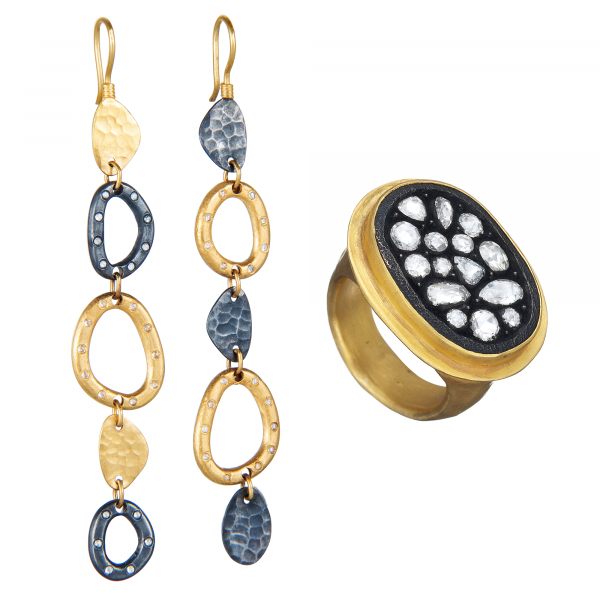
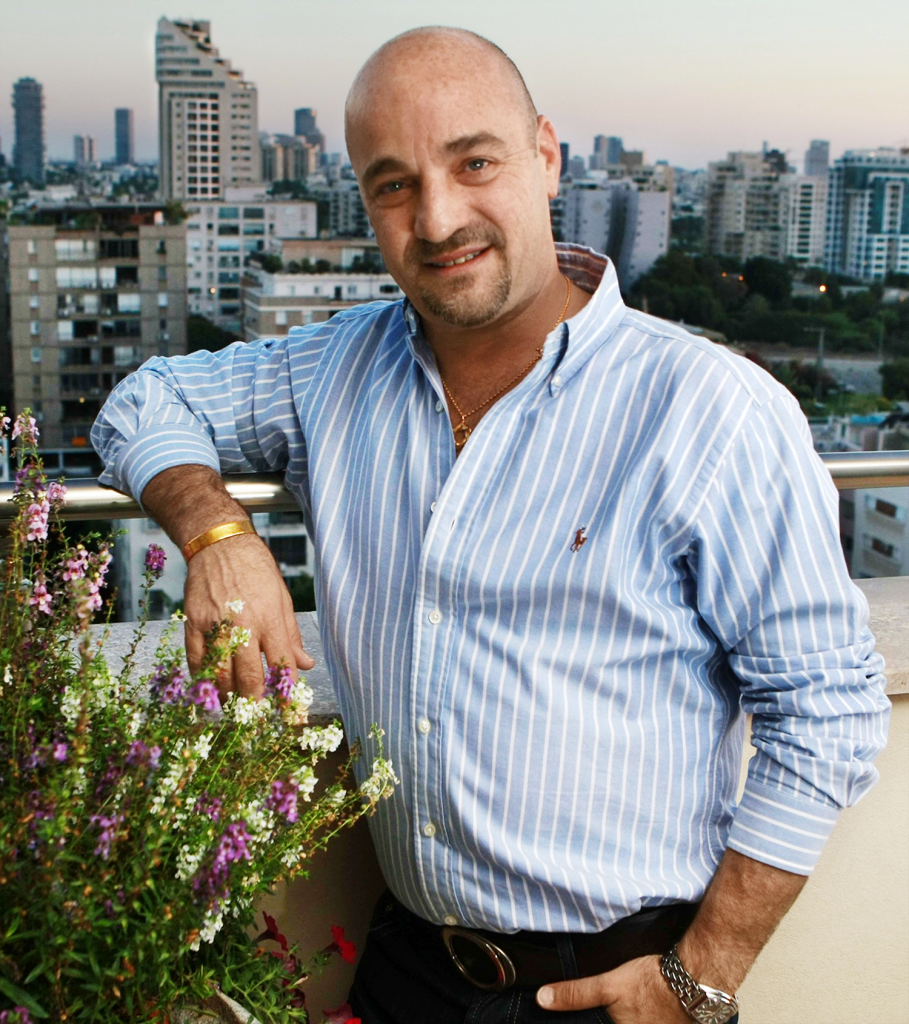 For a quarter of a century, Harari has been doling out surgery-free face-lifts with his glowing gold jewelry designs
For a quarter of a century, Harari has been doling out surgery-free face-lifts with his glowing gold jewelry designs
Over the past few years, Israeli jewelry designer Yossi Harari has been hitting milestone after milestone: In 2015, he celebrated his very own golden birthday, the big 5-0. In 2016, he marked 25 years in business, 15 of those in the United States. So is he stopping to catch his breath? Hardly. He’s poised for an even bigger and busier 2017.
It’s a bone-chilling Manhattan afternoon, and, his hands nestling a cup of Starbucks, Harari runs down the lengthy list of upcoming ventures, his back to a window at a Midtown showroom. There’s a revamp of his website, which will include an online store, a project spearheaded by his longtime partner (work and otherwise), Yaron Benit. He’s growing his wholesale business, with a push into Asian and European markets. Also in the pipeline: a debut men’s collection inspired by the one-offs he often fashions for himself, which will be part of an also-new Heritage line of popular classics (e.g., his lariat necklaces from the ’90s).
While the new site bows this spring, he remains mum on the other launch dates. “We can’t open all the floors of the store in one day,” Harari laughs. He’s dressed in a casual blur of gray—gray hoodie, jeans, and sneakers—punctuated by a slim camo scarf and bright, gleaming jewelry. Sprinkled among the latter are some of his new men’s pieces: textured, hammered cuffs and a beaded lariat, featuring turquoise, agate, and onyx, with a boho tilt à la the Rolling Stones in Marrakesh.
As much as Harari is expanding, he’s likewise contracting. He’s bringing marketing and distribution in-house, and cutting down on the number of styles each season. “We just counted and I did 9,000 SKUs in 18 years!” he exclaims. “I’ve been giving away too many ideas for other designers to take. I have a new strategy now. I’m thinking more about branding.”
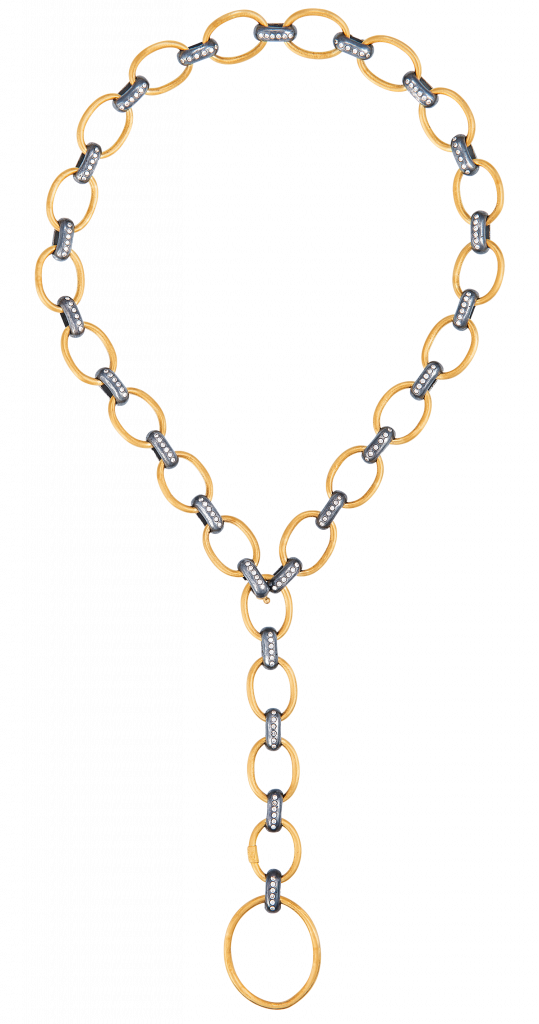
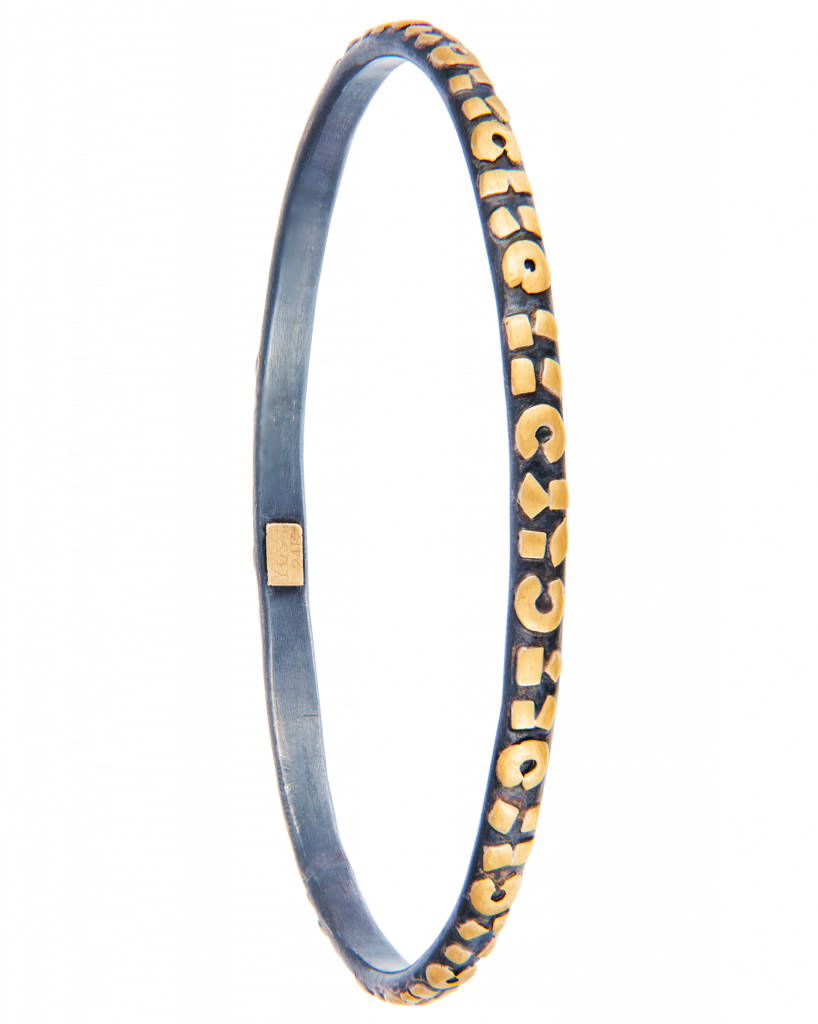
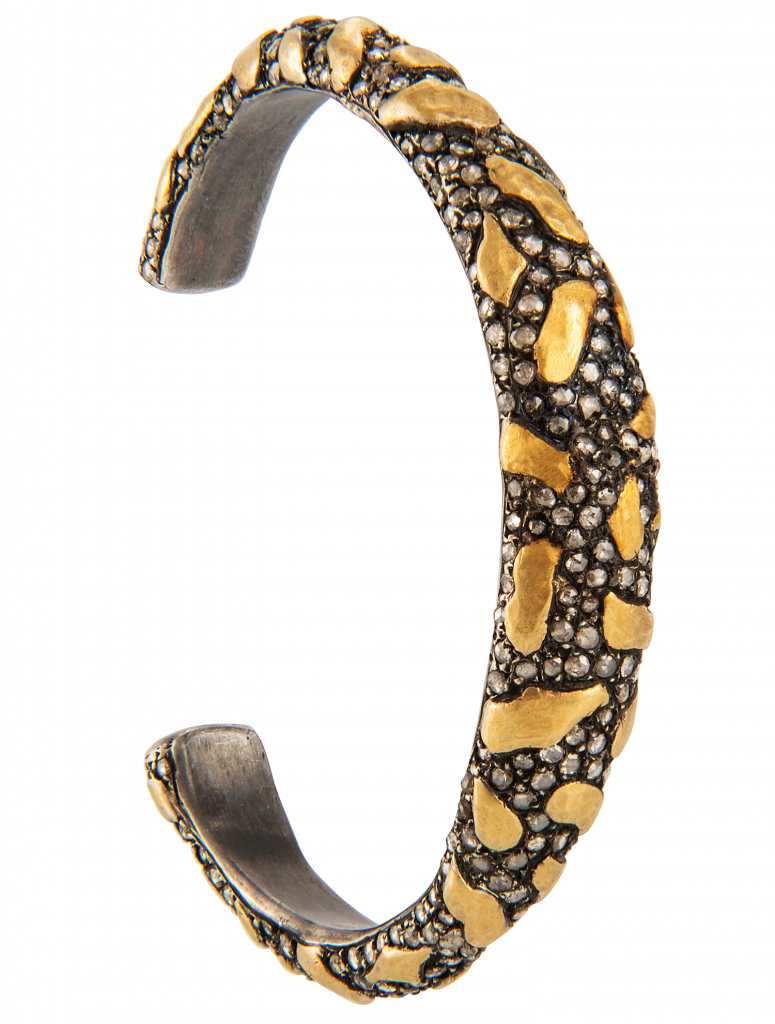
Rachel diamond link necklace in 24k gold and oxidized gilver with 1.8 cts. t.w. diamonds, $19,850, Libra Mica bangle in oxidized gilver and 24k gold, $1,485, Libra Roxanne cuff with 6.5 cts. t.w. cognac diamonds in oxidized gilver and 24k gold, $10,770
Golden Boy
All these moves are a quarter century in the making, the obvious next chapter after slowly and steadily developing a reputation and a loyal clientele. Yet Harari’s story goes back much further. Rewind to 1973. Harari is 8, and tells his parents and grandparents he is going to be the family jeweler.
This precociousness clicks once you understand Harari’s upbringing, which, split among Israel, Turkey, and Switzerland, was rather comfortable, thanks to his maternal grandfather. “He was a very flamboyant person and had a very colorful life,” recalls Harari. “He traveled the world: Paris, Lugano, Milan, New Orleans…” Whenever he returned, he would bring a tray of pricey jewelry for Harari’s mother and grandmother. It also doubled as Harari’s toy box of sorts.
Once, when he was 11 and his parents were away, Harari plucked a 5 ct., D-flawless, emerald-cut diamond solitaire from the vault (“I had the combination”) and, with his grandmother’s help, had the family jeweler rework it with three rows of baguette diamonds around the center stone. Mom’s reaction? “ ‘Wonderful, but bring it back. I’m not going to wear this,’ ” he remembers. “It was too over-the-top for her.” Later, when he was studying at the GIA in Los Angeles, they redesigned that ring together, raising the center stone and placing the baguettes around the base wall.
He is quick to note, though, how antithetical the finery of his childhood—which also included a palatial home in Tel Aviv’s Ramat HaSharon bedecked in baroque and rococo furnishings (currently his showroom)—is to his current sensibility. “I grew up with Cartier, Bulgari, Harry Winston jewelry. I was never attracted to create those styles; for me, it was an intrigue to come up with something different,” says Harari, who would find that “something different” during his art history studies at Tel Aviv University—and especially when he learned about the Hellenistic and Roman arts.
You know the works. The mythological gods and goddesses. Venus de Milo. Naturalistic expressions and bodies. For Harari, however, the appeal was centered on something very different. “That period was so eclectic,” he says. “It was the first time an empire took over different areas—granulation from Damascus, pounding from the Etruscans—and they mixed it all into one world, one empire. I mean, this is before the internet.” Another early influence: Greek jeweler Ilias Lalaounis. “There is not one stone in his designs and they’re beautiful,” says Harari. “What is it? It’s the metal. With those other jewelry designers, it’s about gems.”
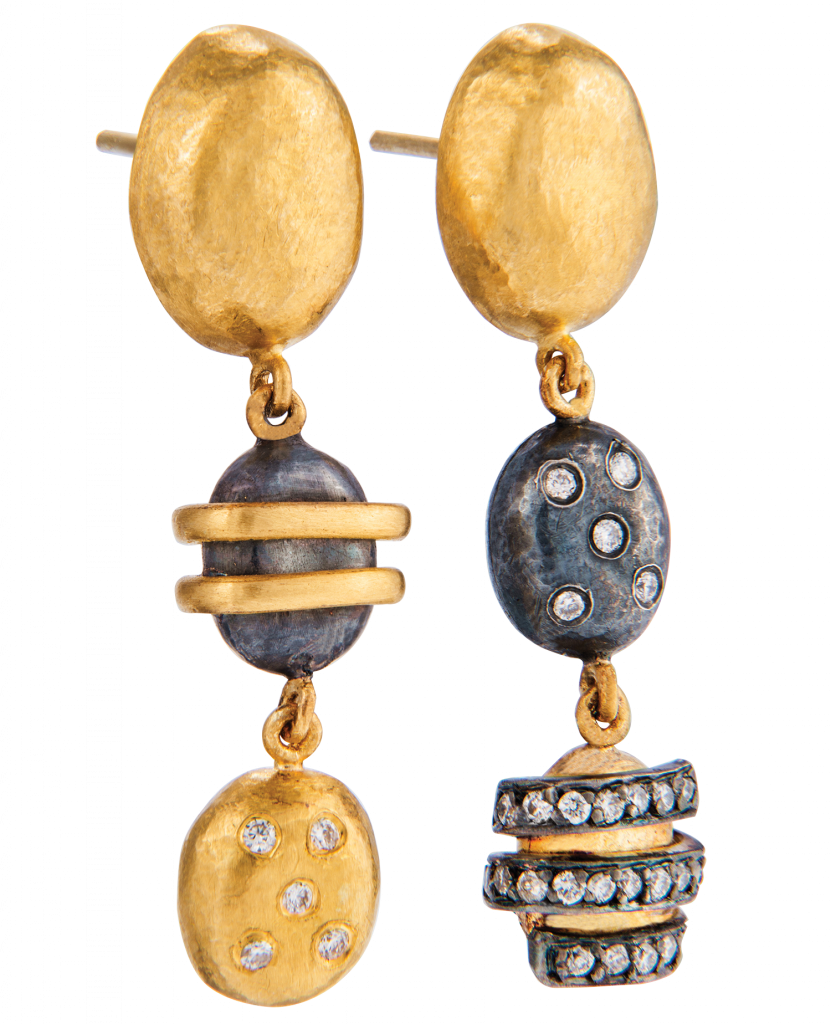
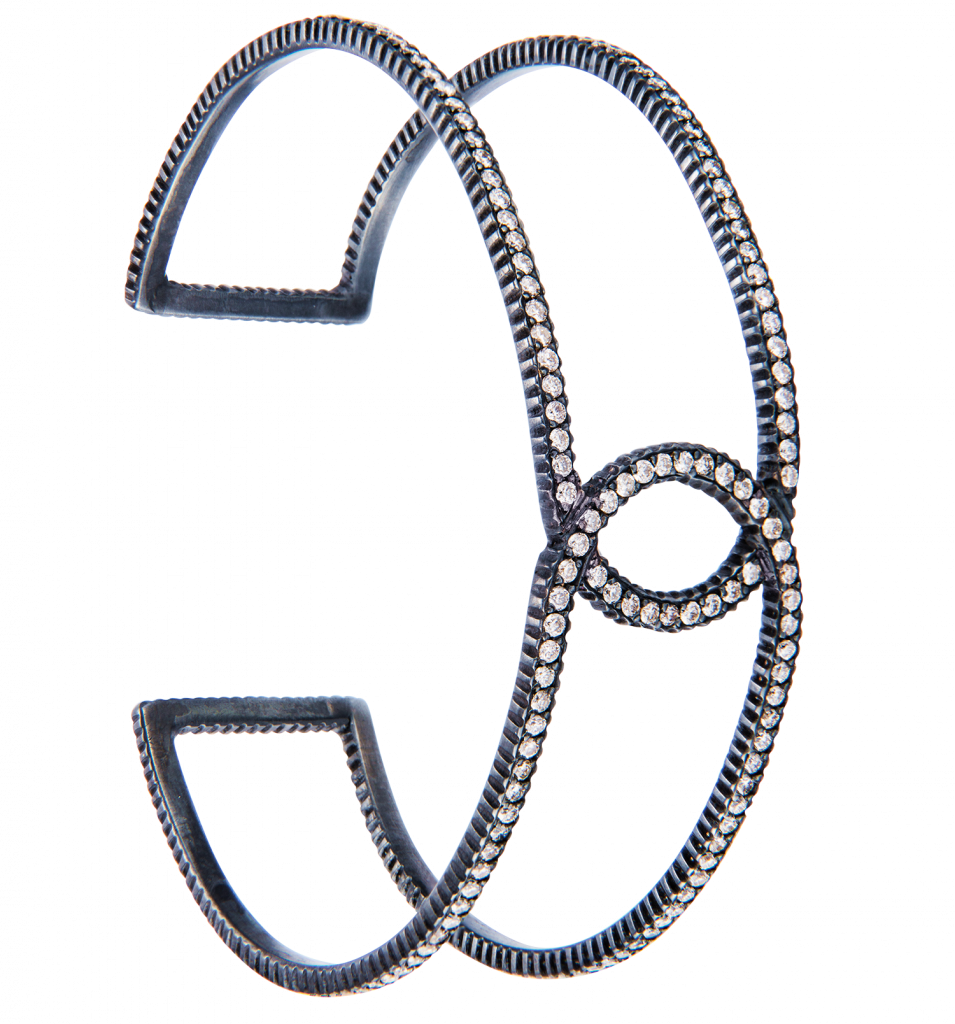
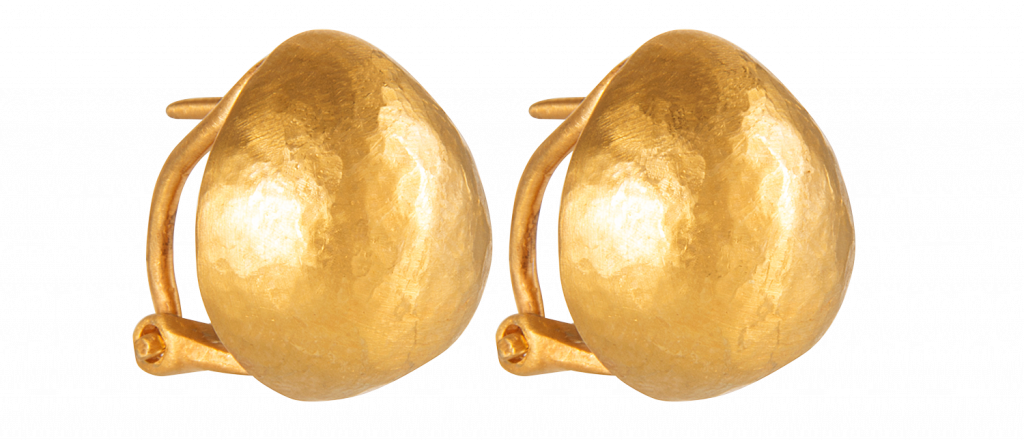
Helen mini diamond earrings in 24k gold and oxidized gilver with 0.6 ct. t.w. diamonds, $4,795, Lilah double D cuff in oxidized gilver with 1.8 cts. t.w. diamonds, $6,770, Roxanne earrings in 24k gold with French clip, $4,985
Metal Head
Harari opened his company in 1991 under the name Olympia, in a nod to Mount Olympus. And even though those first collections featured gold-plated sterling silver, his signature of exalting the metal above all else was already there. In time, the Yossi Harari name—he dropped Olympia after entering the U.S. market in 2000—became synonymous not just with gold, but with the 24k yellow gold of antiquity. “You can’t beat this color—it’s beautiful,” Harari enthuses. “I call it the face-lifter. Put on my 24 karat gold earrings, and your face just glows.”
There’s a warmth to his designs that goes beyond the sun-kissed shades. Nothing is too perfect or sleek; you can sense the hand of the craftsman behind the piece. The entire collection is created in his workshop in Istanbul—even the tools. “We don’t do casting, we don’t do wax carving,” Harari explains. “The secret of 24 karat gold is pounding. You have to pound 3,000 times on the same area to increase the density of the molecules. Everything is made by hand like little sculptures.” Even when Harari incorporates stonework, as with his trademark rose-cut diamonds, the look is more organic and earthy—“bohemian chic, as opposed to bling. My ladies are not about the bling.”
Not that Harari doesn’t stretch beyond that golden comfort zone. His upcoming men’s line, for instance, is primarily silver-based. “Men prefer the white metal color,” he acknowledges. “Just look at men and their watches.” He taps his own as a case in point. And then there’s “gilver”: During the 2008 recession and the subsequent upsurge of the price of gold, Harari navigated the challenging times with his own distinct alloy of silver and 24k gold. “I was lucky,” Harari says. “I had already experimented with oxidized gilver in 2005 for my [Victorian-inspired] Sara and Helen collections.” The innovation helped him skirt the economic blows that befell others in the industry.
Still, 24k gold—which represents 70 percent of his business—is his love; he’s fond of calling it his muse. “There’s something that just attracts my eye,” Harari says, before jumping into a childhood anecdote—he has plenty—that perfectly expresses his ever-constant fascination with the handmade.
It was 1974, and his family had made a trip to the Magic Kingdom at Walt Disney World in Orlando, Fla. Shortly after entering the park, however, his parents lost the 9-year-old Harari. The culprit? A glassblower near the entrance on Main Street. “I was mesmerized,” Harari remembers. “I was excited and intrigued by the way he was pulling and playing with the glass. I didn’t even realize my family had kept walking. I was watching for 15 minutes before I noticed I was alone.”
Today, Harari’s collection also includes jewelry in the style of blown glass. With one big difference: “We do it in gold.”
Top: Melissa earrings in 24k gold and oxidized gilver with 0.55 ct. t.w. diamonds, $5,085, Sara rose-cut mosaic ring in 24k gold and oxidized gilver with 1.5 cts. t.w. diamonds, $13,135, Yossi Harari, 201-357-5010, yossiharari.com